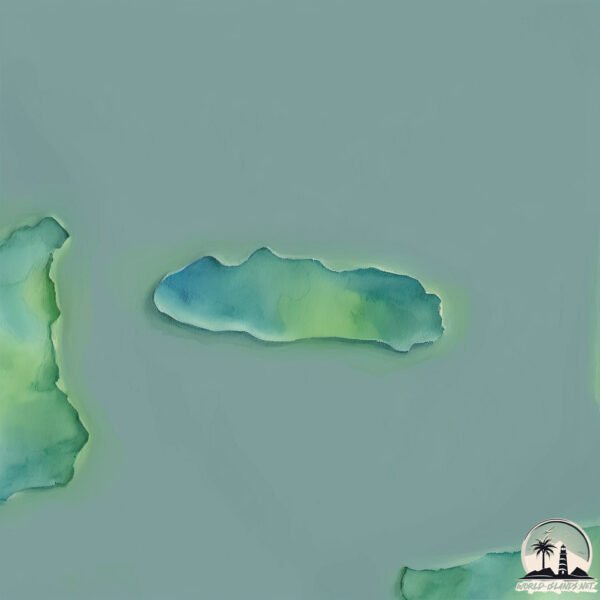Welcome to Rat Island , a Dry island in the Indian Ocean, part of the majestic Indian Ocean. This guide offers a comprehensive overview of what makes Rat Island unique – from its geography and climate to its population, infrastructure, and beyond. Dive into the details:
Geography and size of Rat Island
Size: 0.135 km²Coastline: 2.2 kmOcean: Indian OceanSea: Indian OceanContinent: Oceania
Rat Island is a Tiny Island spanning 0.135 km² with a coastline of 2.2 km.
Archipel: –
Tectonic Plate: Australia – A major tectonic plate covering Australia, New Zealand, and parts of the Indian and Pacific Oceans, known for its relative stability and occasional seismic activity.
The geographic heart of the island is pinpointed at these coordinates:
Climate and weather of Rat Island
Climate Zone: DryClimate Details: Cold Semi-Arid (Steppe) ClimateTemperature: Cold
Climate Characteristics: Characterized by hot summers and cold winters, this climate is typically found on the edges of continental zones. It receives sufficient precipitation to avoid desert conditions.
Topography and nature of Rat Island
Timezone: UTC+09:30Timezone places: Australia/AdelaideMax. Elevation: 4 m Mean Elevation: 0 mVegetation: Herbaceous CoverTree Coverage: 31%
The mean elevation is 0 m. The highest elevation on the island reaches approximately 4 meters above sea level. The island is characterized by Plains: Flat, low-lying lands characterized by a maximum elevation of up to 200 meters. On islands, plains are typically coastal lowlands or central flat areas.
Dominating Vegetation: Herbaceous Cover
Vegetation: 1 vegetation zones – Minimal Diversity Island
Infrastructure and Travelling to Rat Island
Does the island have a public airport? no .
Does the island have a major port? no .
The mean population of Rat Island is 0 per km². Rat Island is Uninhabited. The island belongs to Australia .
Continuing your journey, Mundoo is the next notable island, situated merely km away.
Islands on Foot: Walking Around Burrow Island (Rat Island), Gosport
I am intrigued by the idea of islands that are only islands at high tide. Let's take a walk from Gosport, out across a natural shingle ...
Islands on Foot: Walking Around Burrow Island (Rat Island), Gosport
I am intrigued by the idea of islands that are only islands at high ...
I am intrigued by the idea of islands that are only islands at high tide. Let's take a walk from Gosport, out across a natural shingle ...
Rat Island | Ep 249 | Bad Friends
Why This Guy Paid $176K for Rat Island, New York's Smallest Piece of Land | New York Post
No man is an island, but Alex Schibli is the proud owner of New York's ...
No man is an island, but Alex Schibli is the proud owner of New York's smallest sliver of land: Rat Island. The Swiss-born retired ...
Australia is classified as Developed region: nonG7: Developed economies outside of the Group of Seven, characterized by high income and advanced economic structures. The level of income is High income: OECD.
News – Latest Updates and Headlines from Rat Island
Stay informed with the most recent news and important headlines from Rat Island. Here’s a roundup of the latest developments.
Loading...
Please note: The data used here has been primarily extracted from satellite readings. Deviations from exact values may occur, particularly regarding the height of elevations and population density. Land area and coastline measurements refer to average values at mean high tide.

